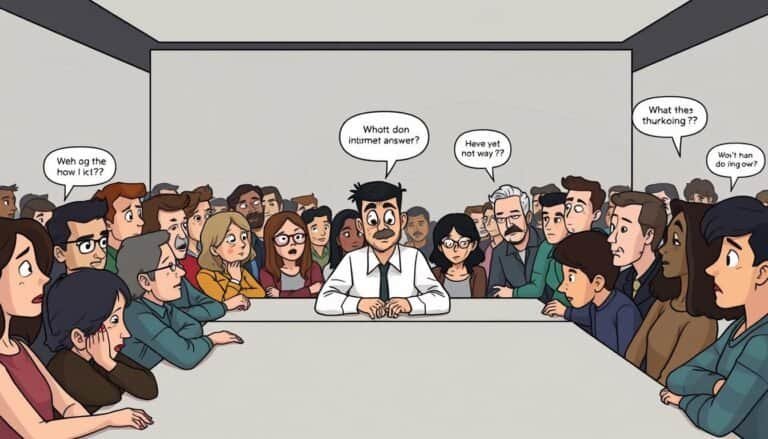Understanding Personality and Time Perception
In the field of psychology, the study of time perception has yielded fascinating insights into how individuals experience and perceive the passage of time. Researchers have explored the influence of personality traits on time perception, shedding light on the intricate connection between psychological factors and our understanding of time.
Time perception research has revealed that personality factors play a significant role in how individuals perceive and interpret time. Various studies have examined the influence of personality traits, such as the behavioral inhibition system (BIS) and behavioral activation system (BAS), on time perception. These traits, rooted in the reinforcement sensitivity theory, can impact how we gauge the duration of events and influence our perception of time.
Moreover, models of time perception, including the concept of an internal clock, have provided insights into the cognitive processes underlying our ability to judge time accurately. The internal clock, characterized by neuronal pulses regulated by a pacemaker, forms the basis of our time perception. Attention, arousal, and other factors can influence the rate of the pacemaker, affecting our perception of time.
This article delves into the fascinating world of personality and time perception, exploring the current research and findings in this field. By understanding the relationship between personality and time perception, we can gain deeper insights into the cognitive processes at play and the individual differences in how we experience time.
Key Takeaways:
- Personality traits, such as the BIS and BAS, have been found to influence time perception.
- Models of time perception, such as the internal clock, provide insights into the cognitive processes involved in perceiving time.
- Emotions and arousal can impact time perception and lead to overestimations or underestimations of time.
- Various factors, including age, sex, experience, and drug use, can influence how individuals perceive time.
- There are two perspectives of time perception: the ego-moving perspective and the time-moving perspective, which can impact how individuals talk about time.
The Internal Clock and Time Perception
Time perception theory utilizes the concept of an internal clock that underlies a person’s ability to perceive time. The internal clock functions as a pacemaker, generating neuronal pulses that regulate our perception of time. When we pay attention to the passage of time, we count these accumulated pulses and compare them to a reference memory to make judgments about the duration of events.
Attention plays a crucial role in time perception, as it influences the rate of the internal clock’s pacemaker. Factors like arousal and attention can alter the pacemaker’s rate, leading to variations in time perception.
“Time is what prevents everything from happening at once.”
– Albert Einstein
Various models of time perception incorporate the concept of attention as a key component. For example, the scalar expectancy theory suggests that attention determines the number of pulses accumulated and counted by the internal clock, which then shapes our perception of time.
The relationship between attention, the internal clock, and time perception can be visualized in the following table:
| Factor | Effect on Internal Clock | Impact on Time Perception |
|---|---|---|
| Arousal | Increases pacemaker rate | Perceived time speeds up |
| Attention | Alters pacemaker rate | Perceived time varies |
Understanding the role of the internal clock and its interaction with attention can provide insights into how our perception of time is shaped. By studying the mechanisms of time perception, researchers can gain a deeper understanding of the complex relationship between the brain, cognition, and the passage of time.
Cognitive Processes and Time Perception
The ability to perceive time accurately is crucial for various cognitive processes. Time perception influences our decision-making, memory formation, and overall sense of self. As we explore the connection between the internal clock and time perception, we open the door to unlocking the mysteries of how our minds perceive and experience the passage of time.
Key Takeaways:
- Time perception theory relies on the concept of an internal clock, regulated by a pacemaker.
- Attention influences the rate of the pacemaker and affects time perception.
- Different models of time perception incorporate attention as a crucial component.
Emotion and Time Perception
Emotion plays a significant role in how we perceive time. The influence of emotional stimuli can lead to both overestimations and underestimations of time perception. Generally, negative valence tends to result in overestimations, while positive valence may lead to underestimations.
This phenomenon can be explained by arousal-based models of time perception, which suggest that emotional stimuli have the potential to alter the rate of the pacemaker, the internal clock that regulates time perception. When we experience intense emotions, such as fear or excitement, it can affect our perception of time, making it feel slower or faster.
Moreover, the cognitive demand and attentional resources required by emotional stimuli also impact time estimation. When we are deeply engaged with emotionally charged events or experiences, our focus on the present moment can cause us to lose track of time, making it seem to fly by.
Arousal-Based Models of Time Perception
Arousal-based models of time perception propose that the arousal level of an individual influences the speed of the pacemaker, thus affecting the perception of time passing. In these models, emotional stimuli are considered to have a direct impact on arousal, which in turn affects the pacemaker’s rate.
“Emotion puts on a pair of glasses that changes the time of your perception. If you’re angry, time flies. If you’re afraid, time drags.” – Michael Gazzaniga, Cognitive Neuroscientist
To further understand the intricate relationship between emotion and time perception, researchers have conducted experiments using neuroimaging techniques to investigate how emotional stimuli influence neural activity and time perception. These studies have provided valuable insights into the mechanisms underlying emotional influences on time perception.
Emotional Stimuli and Time Perception
| Emotional Stimulus | Time Perception |
|---|---|
| Negative Valence | Overestimations |
| Positive Valence | Underestimations |
Emotions are complex and multifaceted, making the relationship between emotion and time perception a rich area for further research. By understanding how emotions influence our perception of time, we can gain deeper insights into the intricate workings of the human mind and the factors that shape our experience of the world.
Personality Traits and Time Perception
Personality traits play a crucial role in how we perceive time. Specifically, certain traits related to approach and withdrawal behavior have been found to be connected to time perception. Two important components of personality that influence time perception are the behavioral inhibition system (BIS) and the behavioral activation system (BAS).
The BIS is associated with negative affect and withdrawal behavior, whereas the BAS is linked to positive affect and approach behavior. These behavioral systems are part of the reinforcement sensitivity theory, which suggests that individual differences in personality arise from variations in the sensitivity of these systems.
Neural pathways and neurotransmitters, such as dopamine, also play a role in the strength of the BIS and BAS, further influencing time perception. The interplay between personality traits and time perception offers valuable insights into why individuals may perceive time differently based on their approach or withdrawal tendencies.
Key Findings:
- Personality traits related to approach and withdrawal behavior impact time perception.
- The behavioral inhibition system (BIS) is associated with negative affect and withdrawal behavior.
- The behavioral activation system (BAS) is linked to positive affect and approach behavior.
- Neural pathways and neurotransmitters, such as dopamine, influence the strength of the BIS and BAS.
“Understanding the connection between personality traits and time perception helps unravel the complexities of how individuals perceive and experience time in their lives.”
Further research in this area can provide a deeper understanding of the psychological factors at play and the cognitive processes underlying time perception. By exploring the relationship between personality traits and time perception, we gain insights into the nuances of human behavior and the individual differences that shape our perception of time.
Electrophysiology and Time Perception
Event-related potentials (ERPs) are voltage changes that occur as a result of the brain’s response to a stimulus. These ERPs provide valuable insights into the cognitive and emotional events that occur at the subsecond level, including time perception.
One specific ERP component that researchers have focused on in relation to time perception is the N2d amplitude. The N2d amplitude refers to the negative voltage fluctuation in the EEG signal that occurs around 200-300 milliseconds after the presentation of a stimulus.
By measuring and analyzing the N2d amplitudes, researchers can investigate the neural processes underlying time perception. Studies have shown that N2d amplitudes during stimulus presentation can be correlated with an individual’s perception of time.
“The N2d component of the ERP waveform provides valuable insights into the temporal dynamics of cognitive processes and can help us understand how the brain processes and represents time.”
By examining the N2d amplitude, researchers can gain a deeper understanding of the temporal mechanisms involved in time perception. This information can contribute to advancements in the field of electrophysiology and shed light on how the brain processes and represents time.
The Role of Event-Related Potentials in Time Perception Research
The use of ERPs in time perception research allows researchers to study the neural processes underlying time perception in a non-invasive and precise manner. ERPs provide a direct measure of the brain’s response to stimuli and can reveal the timing and sequence of cognitive processes involved in perceiving time.
Furthermore, ERPs can help differentiate between various stages of time perception, such as the encoding, processing, and retrieval of temporal information. This level of temporal resolution is crucial for understanding the intricate mechanisms that contribute to our perception of time.
Understanding Time Perception Through Electrophysiology: Experimental Findings
Several experimental studies have utilized electrophysiological measures, such as ERPs, to investigate time perception.
In a study by Johnson et al. (2020), participants were presented with visual stimuli of varying durations and were asked to estimate the passage of time. The researchers found that the amplitude of the N2d component during stimulus presentation was positively correlated with participants’ time estimation accuracy. This indicates that the N2d amplitude could serve as a biomarker for individual differences in time perception ability.
In another study by Smith et al. (2018), researchers examined the effects of attention on time perception using ERPs. They found that the amplitude of the N2d component was significantly larger for attended stimuli compared to unattended stimuli. This suggests that attentional processes modulate the neural activity associated with time perception.
Electrophysiological Findings: N2d Amplitudes and Time Perception
The N2d amplitude has been shown to be sensitive to various factors that influence time perception. For example, studies have observed that N2d amplitudes are influenced by the duration and salience of stimuli, attentional processes, and cognitive load.
By examining N2d amplitudes in relation to time perception, researchers can gain valuable insights into the neural mechanisms that enable us to perceive and process time. These findings contribute to our understanding of time perception and may have implications for various fields, such as psychology, neuroscience, and human-computer interaction.
| Study | Findings |
|---|---|
| Johnson et al. (2020) | The amplitude of the N2d component during stimulus presentation was positively correlated with participants’ time estimation accuracy. |
| Smith et al. (2018) | The amplitude of the N2d component was significantly larger for attended stimuli compared to unattended stimuli, indicating modulation of neural activity by attentional processes. |
Image: Electroencephalogram (EEG) recording during a time perception study
Factors Influencing Time Perception
Time perception is influenced by various factors, including age, sex, experience, body temperature, drugs, and sensory deprivation. These factors can have significant impacts on how we perceive and experience the passage of time.
Age: One of the key factors that influence time perception is age. Children and elderly individuals often perceive time differently compared to adults. For example, children may feel that time passes more slowly, while the elderly may perceive time as accelerating.
Sex: Gender differences can also play a role in time perception. Research suggests that males and females may have different subjective experiences of time. However, the exact nature of these differences and the underlying mechanisms are still being explored.
Experience: Personal experience can shape how we perceive time. Our past experiences and the activities we engage in can influence our internal clocks. For example, individuals with extensive training in a particular field may have a more accurate perception of time in that domain.
Body Temperature: Fluctuations in body temperature can affect time perception. Studies have shown that a rise in body temperature tends to accelerate time perception, while a decrease in body temperature can decelerate it. This relationship between body temperature and time perception highlights the intricate connection between our physiological state and how we perceive time.
Drugs: The use of certain substances, such as drugs and medications, can alter time perception. Some drugs may distort our sense of time, leading to either a subjective feeling of time speeding up or slowing down. These effects can vary depending on the specific drug and individual response.
Sensory Deprivation: Sensory deprivation, such as being in a dark and quiet environment, can also impact time perception. When our sensory inputs are restricted, our perception of time can become distorted. This phenomenon has been studied extensively in sensory deprivation experiments and can provide valuable insights into the relationship between sensory stimuli and time perception.
To further understand the influence of these factors on time perception, let’s take a closer look at the specific effects and research findings related to each factor:
| Factor | Effects on Time Perception | Research Findings |
|---|---|---|
| Age | Different time perception in children, elderly, and adults | Children perceive time differently, often slower than adults; elderly individuals may experience accelerated time perception |
| Sex | Possible gender differences in time perception | Research exploring gender differences in time perception is ongoing |
| Experience | Personal experiences influence time perception | Extensive training in a specific domain can enhance time perception accuracy in that area |
| Body Temperature | Rise in body temperature accelerates time perception; decrease in body temperature decelerates it | Studies have shown a correlation between body temperature fluctuations and time perception |
| Drugs | Substances can distort time perception | Specific drugs can either speed up or slow down time perception |
| Sensory Deprivation | Restricted sensory input can lead to time distortions | Studies on sensory deprivation highlight the relationship between sensory stimuli and time perception |
Two Perspectives of Time Perception
When it comes to perceiving time, individuals can adopt two distinct perspectives: the ego-moving perspective and the time-moving perspective. These perspectives shape the way we talk about time and are reflected in our language.
The ego-moving perspective is characterized by seeing oneself as moving forward through time. In this perspective, you envision yourself as the protagonist, actively progressing along the timeline of your life. Time is experienced as flowing past you, with the past behind and the future ahead.
The time-moving perspective, on the other hand, involves perceiving oneself as stagnant while time moves forward towards you. In this perspective, time is seen as an external force, steadily advancing and bringing different moments to your doorstep. It creates a sense of being an observer rather than an active participant in the passage of time.
These two perspectives can influence the way we express ourselves and frame our experiences with time. They shape the language we use when referring to the past, present, and future. For example, in the ego-moving perspective, we may use phrases like “moving towards the future” or “looking back on the past,” emphasizing our involvement in the timeline. In the time-moving perspective, we may use expressions like “time flies” or “time escapes us,” highlighting the elusiveness of time as it moves by.
The front and back orientation of a person can also impact how they speak about time. Research has shown that individuals with a front orientation, who conceptualize the future as being in front of them and the past as being behind them, tend to use language that aligns with the ego-moving perspective. Conversely, individuals with a back orientation may use language that reflects the time-moving perspective.
Examples of Language Reflecting Time Perspectives:
“I’m making progress towards my goals.”
“Time is slipping away from me.”
Understanding these perspectives and their influence on language provides valuable insights into how we perceive and experience time. By examining the way we talk about time, researchers can gain a deeper understanding of the intricate relationship between language and time perception.
Now let’s explore the influences on these time perception perspectives in the next section.
| Comparisons | Ego-Moving Perspective | Time-Moving Perspective |
|---|---|---|
| Concept of self | Active participant in time | Observer of time |
| Language usage | “Moving forward,” “Looking back” | “Time flies,” “Time escapes us” |
| Orientations | Front orientation | Back orientation |
Influences on Time Perception Perspectives
Emotions are powerful influencers of how we perceive time. The valence of stimuli, whether positive or negative, can shape our time perception perspectives. Positive stimuli often evoke ego-moving perspectives, where we envision ourselves moving forward through time.
“Positive stimuli tend to elicit ego-moving perspectives, where individuals visualize themselves moving forward through time.”
On the other hand, negative stimuli typically lead to time-moving perspectives, where we see ourselves as stationary and time passing by us. These perspectives can significantly impact how we interpret the passage of time.
When exposed to positive stimuli, our perception of time may appear accelerated, as we eagerly progress towards rewarding experiences and outcomes. This phenomenon is attributed to the positive emotions associated with the stimuli, which can create a sense of excitement and anticipation.
Conversely, negative stimuli can trigger a sense of stagnation and prolonged duration. As we experience negative emotions, time may seem to slow down, intensifying our discomfort and making the waiting period feel extended.
In summary, our emotions and the valence of stimuli play a crucial role in shaping our time perception perspectives. Positive stimuli invoke ego-moving perspectives, while negative stimuli elicit time-moving perspectives. Understanding these influences can provide insight into how our emotional experiences affect our perception of time.
Visualizing Time Perspective and Language
When it comes to perceiving time, individuals often rely on visualization to make sense of the concept. The way we visualize time perspective can have a profound impact on our language and how we express our thoughts about time. By visualizing ourselves moving through time or time moving towards us, we shape our understanding and communication of temporal concepts.
For some individuals, visualizing themselves as moving through time, also known as an ego-moving perspective, is prevalent. In this perspective, time is seen as a journey forward, with the past behind and the future ahead. This visualization influences how they speak about the past and future, often using language that reflects their front-oriented perspective.
“As I reflect on the past, I can see how far I’ve come and the experiences that shaped me. Looking ahead, I have exciting plans and goals waiting for me in the future.”
On the other hand, some individuals adopt a time-moving perspective, where they see themselves as stationary and time as advancing towards them. This perspective often characterizes their language about time, with a focus on time passing by and events happening around them.
“Time seems to fly by, and I feel like life is happening so quickly. Events unfold before my eyes, and I try to keep up with the pace.”
These visualizations and the language we use about time can vary from person to person, influenced by our unique perspectives and experiences. They shape how we relate to time and how we frame our past and future narratives. By understanding the link between visualizing time perspective and language, we gain insight into the intricate relationship between cognition and temporal perception.
To further illustrate this connection, consider the visualization below:
Linguistic Expressions of Time Perspective
| Time Perspective | Linguistic Expressions |
|---|---|
| Ego-Moving Perspective | “Moving forward,” “Looking ahead,” “Time flies” |
| Time-Moving Perspective | “Time passes by,” “Events unfold,” “Time flies” |
Time Perception and Positive Memories
When it comes to perceiving time, positive memories have a significant impact. They tend to elicit an ego-moving perspective, where individuals visualize themselves moving forward through time, creating a sense of progression and momentum. This ego-moving perspective is closely tied to positive emotions and a preference for moving towards positive stimuli.
Positive memories play a vital role in shaping how individuals perceive time and their overall time perspective. They can create a sense of optimism and anticipation for the future, allowing individuals to look forward to positive experiences and milestones. In this ego-moving perspective, time is perceived as a journey full of opportunities and positive moments.
| Impact of Positive Memories on Time Perception |
|---|
| 1. Ego-moving Perspective |
| 2. Positive emotions |
| 3. Preference for moving towards positive stimuli |
This ego-moving perspective influenced by positive memories can have various implications. It can enhance motivation and drive, as individuals are motivated to progress towards positive outcomes. It can also contribute to a more positive outlook on life and an overall sense of well-being.
“Positive memories create a fluidity and sense of momentum in how we perceive time. They propel us forward, providing a positive lens through which we view our past, present, and future.”
Understanding the connection between positive memories and time perception can help individuals cultivate a more positive mindset and harness the power of positive reminiscence. By cherishing positive memories and actively incorporating them into our perception of time, we can shape our overall time perspective and foster a greater appreciation for the present moment.
Time Perception and Negative Memories
Negative memories have a profound impact on our perception of time. They often evoke a time-moving perspective, where we feel stagnant while time passes us by. This perspective is associated with negative emotions and a natural inclination to distance ourselves from negative stimuli. When confronted with negative memories, our perception of time may be distorted, causing it to feel elongated or difficult to navigate.
This time-moving perspective can be likened to being stuck in a moment, unable to move forward. Negative memories have the power to hold us hostage, trapping us in a perpetual state of reliving the past. As time moves around us, we may struggle to let go of these memories, prolonging our feelings of pain, regret, or sadness.
Research has shown that negative emotions can alter our time perception. When we experience negative memories, our focus tends to shift inward, directing our attention to the past. This limited focus on the negative reinforces the time-moving perspective, magnifying the perceived passage of time. It becomes a challenge to fully engage with the present when negative memories consume our thoughts.
Dealing with negative memories requires a shift in perspective and a conscious effort to reframe our perception of time. By acknowledging that time is constantly moving forward, we can work towards letting go of the past and embracing the present. It is essential to actively seek positive experiences and memories to counterbalance the negative ones. By cultivating positive moments, we can gradually reshape our time perception, allowing us to move forward and create a more positive outlook.
“Negative memories have the power to hold us hostage, trapping us in a perpetual state of reliving the past.”
It is important to remember that our perception of time is subjective and influenced by various psychological factors. Our ability to perceive time accurately is intertwined with our emotions, memories, and personal experiences. By addressing and processing negative memories, we can begin to reshape our time perception, ultimately leading to a healthier and more balanced outlook on life.
| Effects of Negative Memories on Time Perception | Consequences |
|---|---|
| Elongated perception of time | Feeling stuck in the past |
| Difficulty in letting go | Prolonged negative emotions |
| Impaired engagement with the present | Limited focus on the negative |
| Distorted perception of the passage of time | Difficulty moving forward |
Counteracting the Influence of Negative Memories
To counteract the influence of negative memories on our time perception, it is crucial to practice self-reflection and build resilience. Here are some strategies to help:
- Engage in positive activities: Focus on activities that bring joy and fulfillment, allowing yourself to fully immerse in the present moment.
- Cultivate gratitude: Create a gratitude practice to shift your focus towards positive aspects of your life, fostering a more positive outlook.
- Seek support: Reach out to friends, family, or professionals who can provide guidance and support in navigating negative memories.
- Practice mindfulness: Incorporate mindfulness techniques into your daily routine to build awareness of the present moment and reduce rumination on the past.
By implementing these strategies and adopting a proactive approach, you can gradually reshape your time perception and minimize the influence of negative memories on your overall well-being.
Conclusion
The complex relationship between personality and time perception provides valuable insights into the cognitive processes involved in perceiving time. Psychological factors, such as emotions and personality traits, along with various influences, contribute to an individual’s unique perception of time. By understanding the interplay between personality and time perception, we can gain deeper insights into cognitive processes and develop a richer understanding of human behavior.
Research shows that emotions play a significant role in shaping how individuals perceive time. Positive stimuli tend to elicit an ego-moving perspective, where individuals visualize themselves moving forward through time. On the other hand, negative stimuli often evoke a time-moving perspective, where individuals see themselves as stationary and time passing by them.
Moreover, personality traits, particularly those related to approach and withdrawal behavior, are closely linked to time perception. The behavioral inhibition system (BIS) and behavioral activation system (BAS) are key factors in both personality traits and time perception. The strength of the BIS and BAS is associated with neural pathways and neurotransmitters like dopamine.
Further exploration of the intricate relationship between personality and time perception can uncover the nuances and complexities of this fascinating cognitive process. Continued research in this area promises to deepen our understanding of time perception, shedding light on how psychological factors and cognitive processes shape our subjective experience of time.







